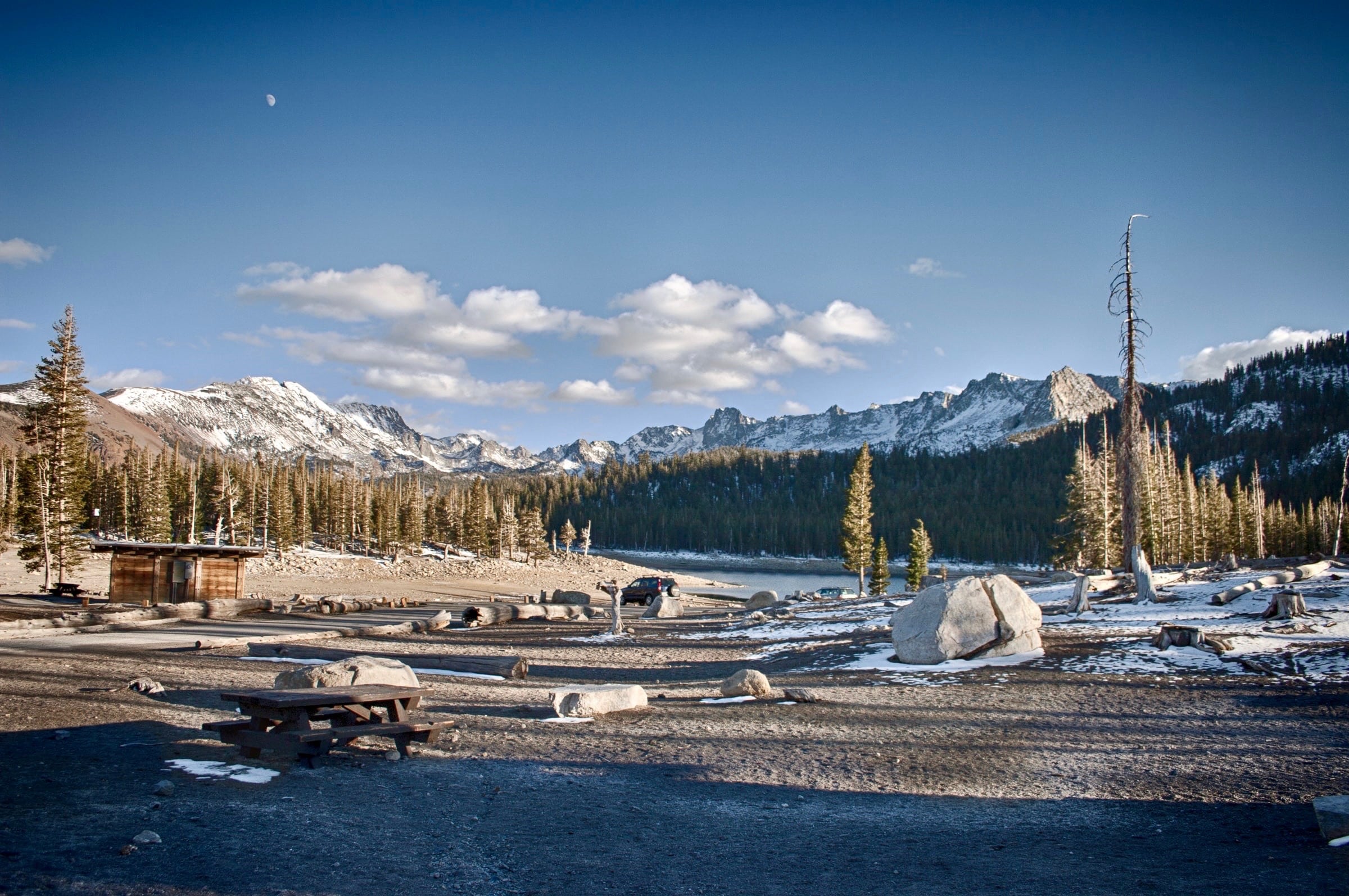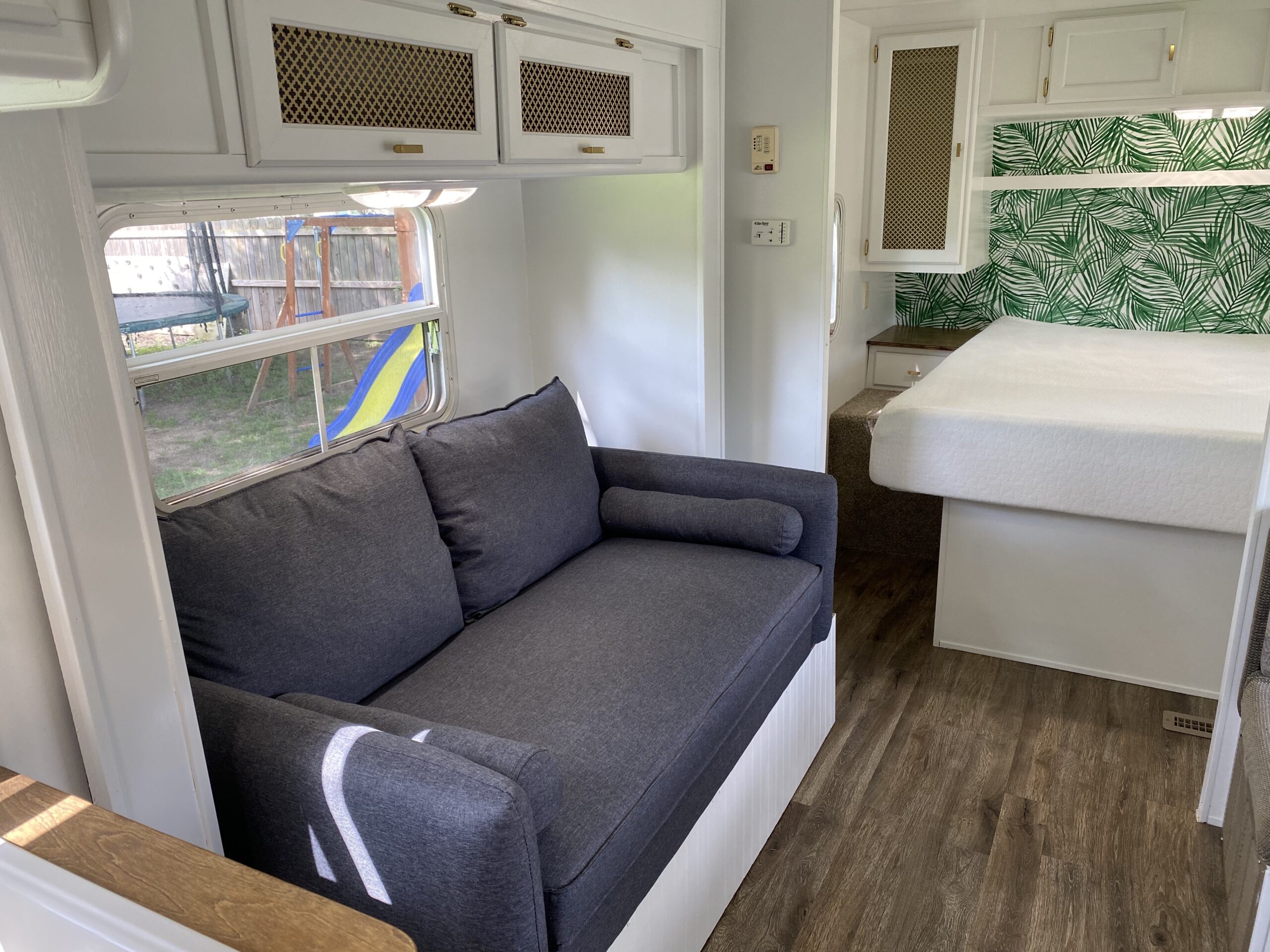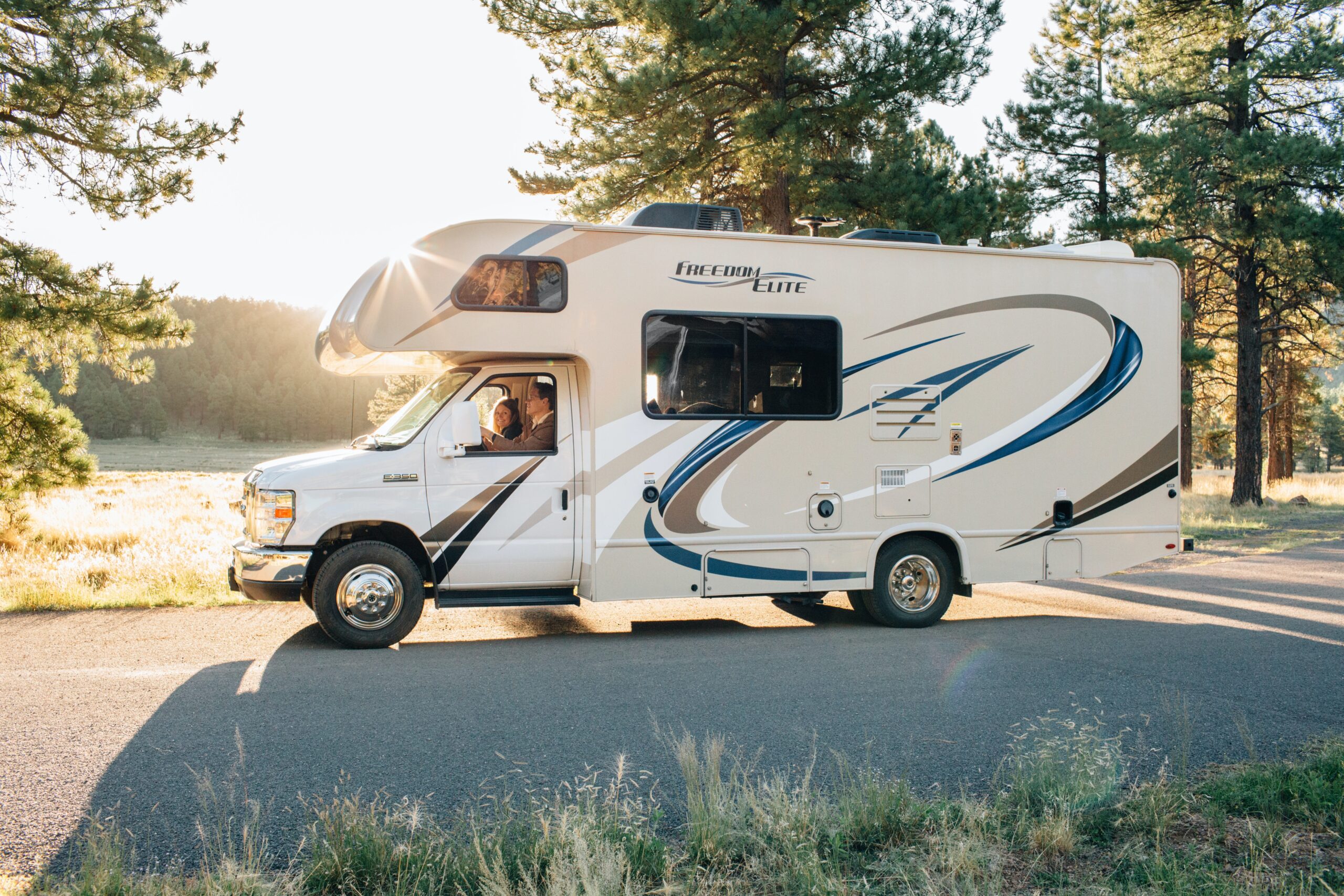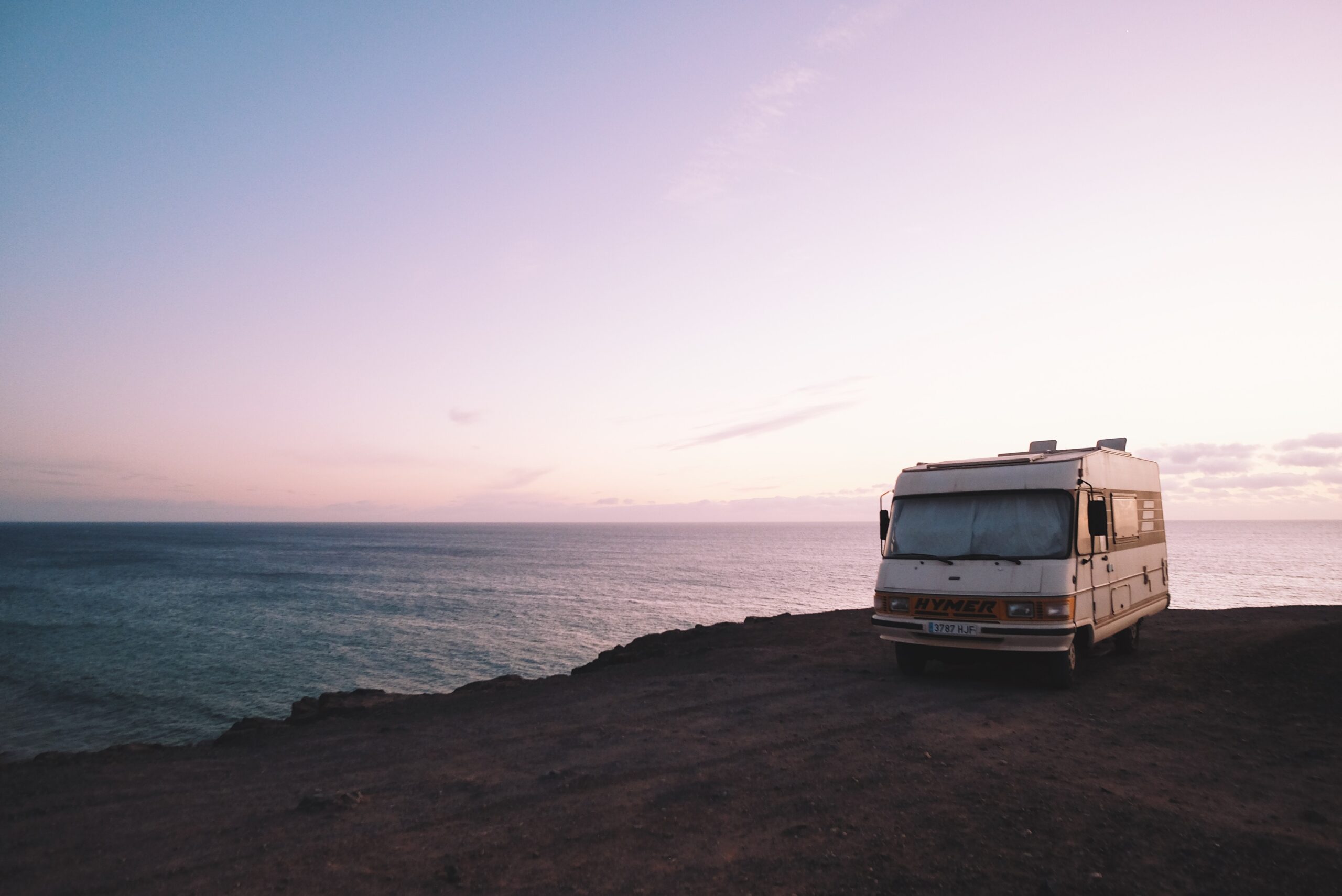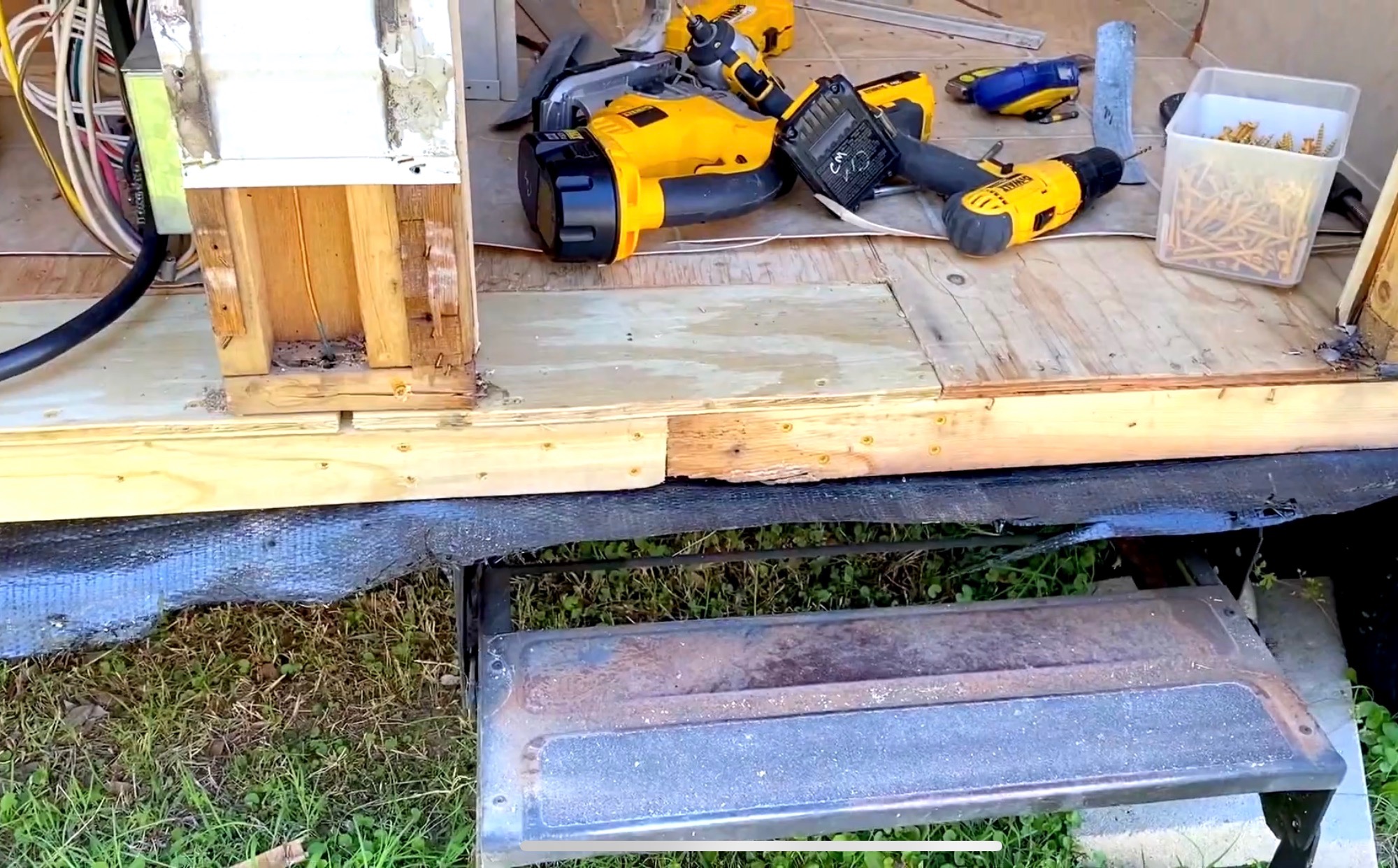There are a lot of folks who want to buy a new fifth wheel and want to make sure they can use it during the winter. Now, keep in mind, there is a big difference between winter RVing in Florida and winter RVing in the upper Midwest.
You would be hard-pressed to find an RV that wouldn’t work down in Florida. However, the further north you go, the options become less and less. If you plan on using your fifth wheel in colder climates or in the winter, you want to make sure you make the right choice.
Digging for information on solid 4-season fifth wheels can be a little daunting. A lot of times the information is hidden or it’s hard to understand. You may also run into a situation where some of the information can be a little misleading because of the use of words or phrases that “sound” like they would be great for winter use. Be careful with these.
When you start to consider using your fifth wheel RV in the winter, you need to be aware of some of the issues you will want to avoid. Some of these may be minor inconveniences and some may cause major problems.
Winter RV Issues to Avoid
- Holding tanks freezing
- Losing valuable heat
- Maintaining heat
- Refrigerator issues
All of these issues can be mitigated with a rig more suited for cold weather. Not all campers are built the same and not all offer the same level of cold weather protection.
As a bonus, if it designed and built for cold temperatures, it will also perform really well in the hot summer months. This means better efficiency, less wear and tear on mechanical components like the A/C, and more.
In the winter, it equates a more comfortable experience and less drain on your furnace and more.
Grand Design Solitude
The Grand Design Solitude Fifth Wheel is what Grand Design describes as a luxury extended-stay RV. This is a big RV with a lot of space and a lot of features. It’s also one of the best options for RVing in the winter.
There are a number of things to look at when you are considering an RV for winter use, but there are a few that are more important than the others.
Let’s look at one of the most important factors when considering an RV for the cold…insulation. This can make or break an RV experience during the winter.
Grand Design offers what they call “Maximum Insulation” on the Solitude. Let’s take a look at what all it entails.
Grand Design utilizes a layer of radiant foil insulation combined with fiberglass insulation to cover the roof. These insulation layers are then extended the full length of the roof and all the way down to the bottom of the front cap.
In order to increase and maximize the effectiveness of the insulation, Grand Design included a vented attic allowing condensation to escape the roof.
The Grand Design Solitude also comes with a mandatory Weather-Tek Package lending itself to RVing in the winter.
Moving down from the main roof, Grand Design uses welded aluminum framing which is then laminated with rigid foam insulation. This includes the sidewalls, rear wall, slide room roof, and slide room end walls. This rigid insulation prevents settling, which is often found with soft fiberglass insulation.
The main floor of the Solitude is insulated using a 3-layer insulation method. The first two layers are on the underbelly and the last layer is for the main floor. The first layer of the underbelly is a radiant foil insulation barrier, and the second layer is fiberglass insulation. Finally, the third layer, which is used on the main floor, is an additional layer of fiberglass insulation.
Stiff aluminum rails are used to keep the corrugated barrier fastened securely against the frame. This helps create a better seal to prevent the elements from getting in.
Grand Design also adds fiberglass insulation under the gooseneck, which adds an additional layer of protection against cold temperatures.
The Solitude comes with insulation inside the baggage doors in the form of rigid foam. This prevents the baggage areas from being a weak point in the fight against the cold. Their Weather-Tek Package includes:
- 35k BTU High Capacity Furnace
- Fully Enclosed and Heated Underbelly
- Heated Tanks and Storage
- Attic Vent
- High Capacity Heat Ducts
- All-In-One Enclosed and Heated Utility Center
If you take all these factors into consideration, you have a winning combination in the fight against the cold. With a variety of floorplans and layouts, you are sure to find one that works for you.
Northwood Arctic Fox Grande Ronde
Northwood Manufacturing prides itself on building warm coaches. They offer a variety of features that are available in all of their lines to truly optimize your winter RV experience. In their words, they build true 4-season coaches.
Since we are looking at fifth wheels, we want to specifically point out the Arctic Fox Grande Ronde. A few of the features include heated enclosed holding tanks heated dump valves specifically designed for cold weather in northern climates.
These fully insulated holding tanks have warm air that circulates around the suspended tanks offering protection against freezing temperatures. Northwood also utilizes enclosed knife valves to help prevent freezing.
Their 4-season coaches use a variety of residential quality insulation types such as rigid foam, batten, and reflective foil. These not only protect against the cold but also offer added protection against the heat.
All of these features combined make it a solid option for those wanting to venture out in the winter. Northwood specifically addressed a lot of the issued often faced when RVing in winter. This makes them a solid contender in this category.
Keystone Montana
Next up is the Keystone Montana. Available in a variety of floorplans, you are sure to find one that suits you.
Keystone offers quite a few construction features and four-season features, making this another solid contender in the winter fifth-wheel category.
When it comes to construction, the Keystone Montana offers thick 5/8″ seamless floor decking providing a solid, thick layer of protection. Keystone also incorporates a double-insulated laminated rear wall to this package.
Some of the four-season features they offer include:
- 35,000 BTU furnace
- Insulated and heated holding tanks
- heated dump valves
- 12-volt electric tank heaters
- 3″x14″ in-floor straight line heat duct system
- 16,500 BTU heat pump on the main A/C
- 2 attic vents for cross-ventilation to fight condensation
- Insulated (in-floor) water lines
- Heated and enclosed drains (low-point)
Most of these features on included with the “Four Season Living Package” offered by Keystone. In addition to the benefits in cold-weather, quite a few of the features address hot weather concerns.
This makes the Montana another strong option when it comes to cold-weather options.
Coachmen Chaparral
The last fifth wheel in our lineup is the Coachmen Chaparral. The Chaparral has a lot of cool features, not related to winter RV use, but that’s a story for another time. Let’s stay focused on cold weather.
So, what makes the Chaparral more suited for winter use? I’m glad you asked.
Coachman states they offer best-in-class insulation due to their Weather Shield+ insulation system. Weather Shield+ insulation combines radiant barrier protection with modern insulation like closed-cell block foam, Azdel composites, and residential batten insulation.
They use these to protect the entire interior of the rig from the cold, harsh elements. This improves comfort and increases efficiency in all your systems.
For reference, the radiant barrier insulation is used on the roof, cap, rear wall, underbelly, slide end panels, slide floor, slide roof, and upper deck. The underbelly is also fully enclosed and heated to offer additional protection.
The Azdel composite sidewall insulation panels offer 3x the protection as standard luan. This is combined with higher density (2 lbs.) block foam insulation on the floor and sidewalls.
Batten insulation is then used in combination with the radiant barrier on the roof, front cap, rear wall, and slide end panels.
The insulated underbelly is constructed out of 4’x8′ panels, which make it easy to service the tanks. The tanks are duct heated and insulated with radiant barrier. The gate valve and tank area are able to maintain a constant temperature within 2 degrees. As a bonus, the radiant barrier (aluminum-based) also acts as a layer of protection against rodents and other pests.
Again, taking all this into consideration, you can see why the Coachmen Chaparral made the list. A lot of thought and planning went into making this rig more suitable for colder conditions. It fits nicely with the other options on this list.
Winter RV Tips
In addition to buying the right rig, there are things you can do to make winter RVing more bearable. We’ve included a few tips and tricks to add to your arsenal before heading out.
If you combine these with a solid fifth-wheel option, your chances of a more enjoyable trip are more likely. Again, winter camping is not for the faint of heart, but it can be done and it can be done well. Let’s look at a few things to keep in mind.
- Make sure to use an RV skirt or insulating foam boards for additional insulation
- Use a heated freshwater RV hose
- Use antifreeze in your holding tanks
- Use insulated curtains or cut foil insulation to fit your windows
- Use RV vent cushions on ceiling vents
- Spray antifreeze on slide gaskets
Conclusion
Hopefully, this list helps to point you in the right direction. If none of the models above work for you, maybe they will give you an idea of the kinds of features to look for.
RVing in the winter can be done, and it can be an enjoyable experience. However, having the wrong setup can be a recipe for disaster. There are a lot of things you can do to and RV to help it perform better in cold climates. However, there are some very important issues you can’t address. At least within reason.
Insulation is one of those things. Whatever RV you choose, make sure it has sufficient insulation all the way around. This is vital to maintaining heat and to prevent heat loss.
Next consider holding tanks, drains, valves, hoses, etc. All of these can cause issues when the temperature drops low enough. Fortunately, all of the “4-season” RVs take care of these for you. However, you still need to make sure you do your due diligence when researching.
Most of all, have fun and stay warm out there.

